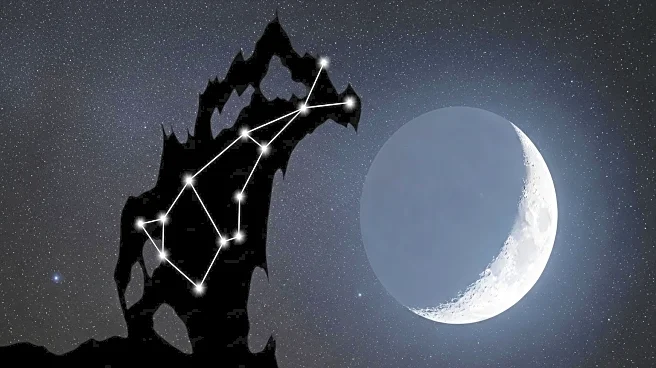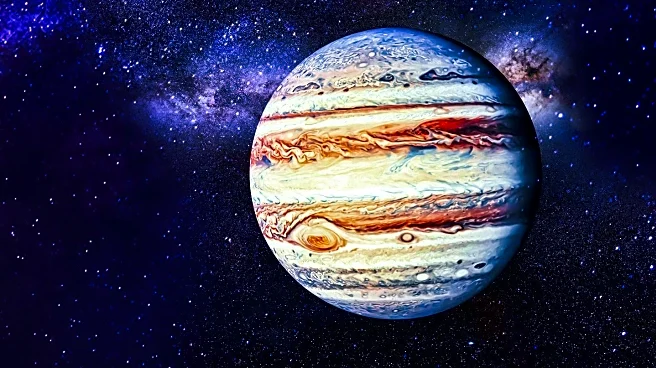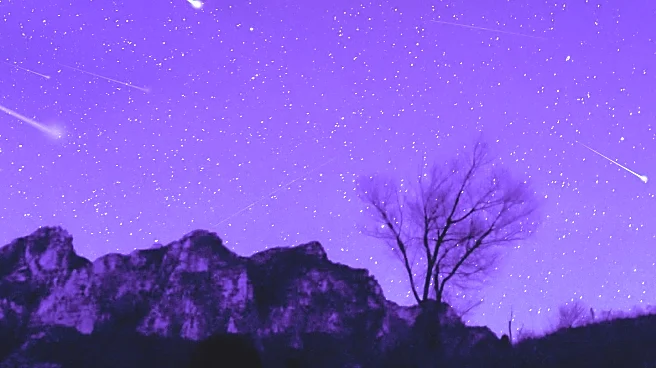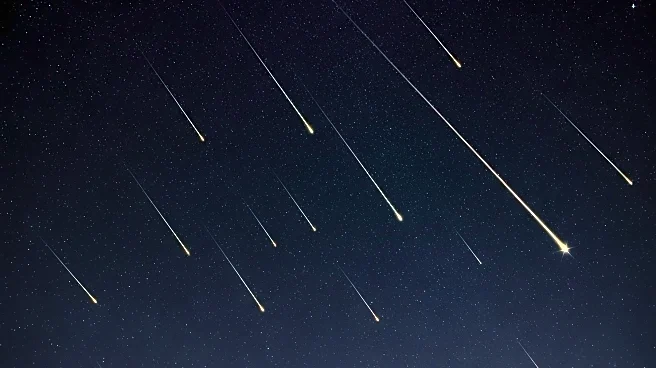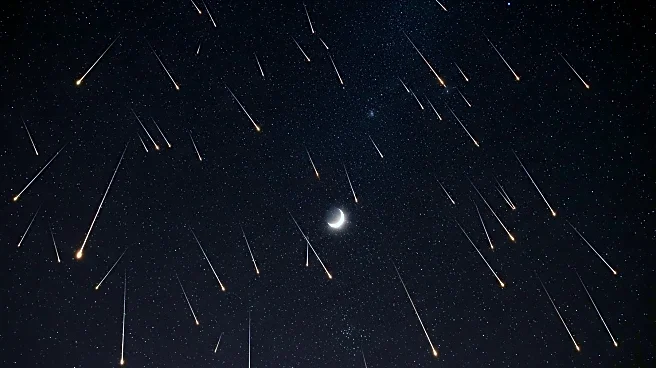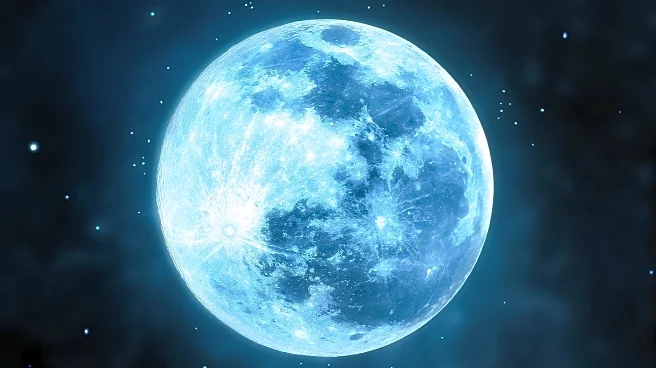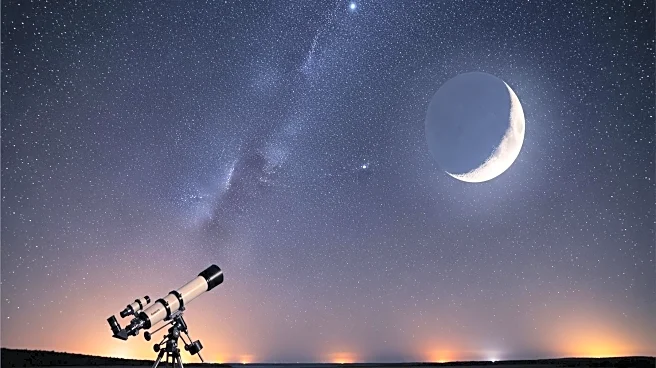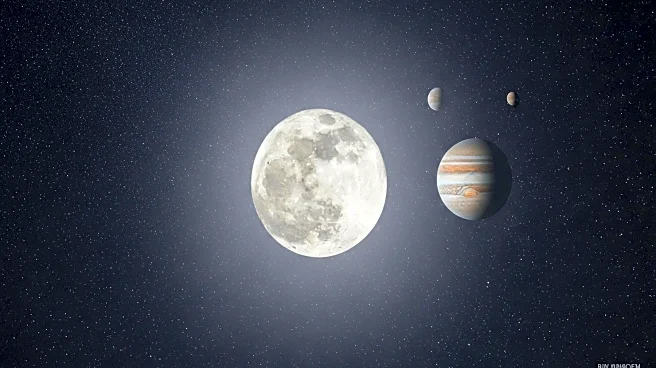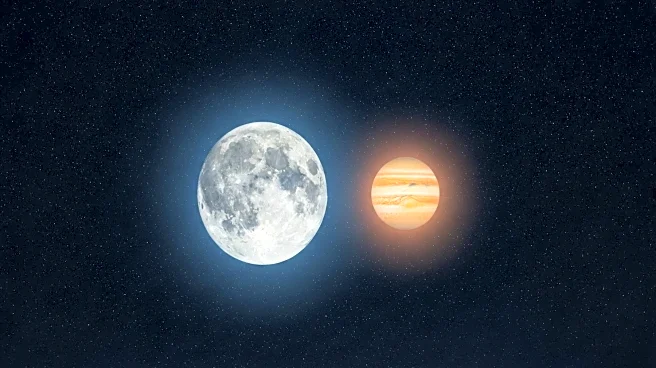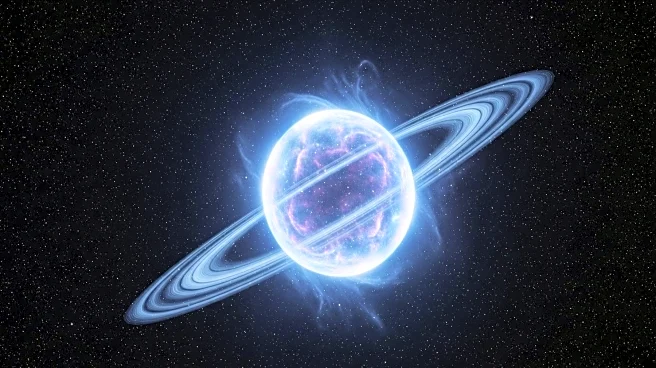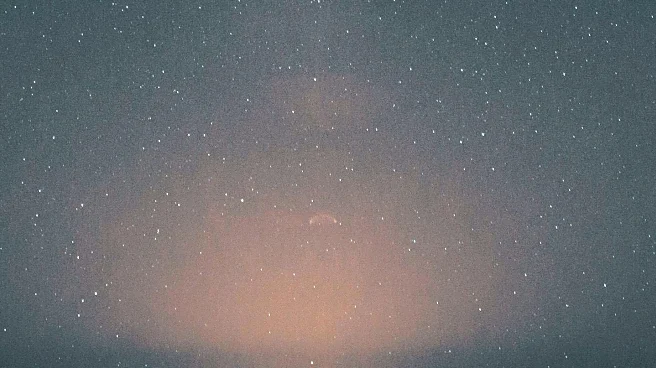What's Happening?
On October 12, stargazers will have the opportunity to witness a celestial event featuring the constellation Orion and the half-lit moon rising above the eastern horizon. The event will occur shortly before midnight, with Jupiter also visible in the sky. The constellation Orion, known for its bright stars such as Betelgeuse and Rigel, will be a focal point for observers. Betelgeuse, a red giant star nearing the end of its life cycle, is expected to eventually explode in a supernova, although this is predicted to occur tens of thousands of years from now. The Orion nebula, a stellar nursery, will also be visible near Orion's Belt, providing a rich field of view for astronomers and enthusiasts alike.
Why It's Important?
This celestial event offers a unique opportunity for stargazers and astronomers to observe some of the most prominent features of the night sky. Orion is one of the most recognizable constellations, and its visibility alongside the moon and Jupiter provides a chance to study its stars and nebulae. The event highlights the importance of dark sky locations for optimal viewing, as light pollution can significantly diminish the visibility of such phenomena. For amateur astronomers, this is an excellent occasion to practice observational techniques and utilize telescopes to explore deep-sky objects.
What's Next?
Following this event, stargazers can look forward to more celestial occurrences, including the close approach of the moon and Jupiter on October 13. These events are part of a series of skywatching opportunities that will continue throughout the fall and winter seasons. Observers are encouraged to plan their viewing sessions in advance to take full advantage of these astronomical events.
Beyond the Headlines
The visibility of Orion and its associated stars and nebulae underscores the ongoing interest in stellar evolution and the lifecycle of stars. Betelgeuse's eventual supernova will be a significant event in the field of astronomy, providing insights into the processes that govern star death and the formation of new celestial bodies. The Orion nebula's role as a stellar nursery offers a glimpse into the birth of stars, contributing to our understanding of cosmic phenomena.
